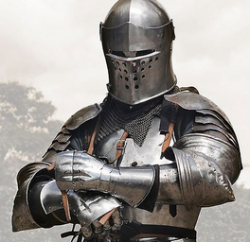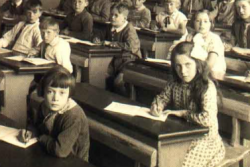In the corner


You are sent to the corner. Naughty. You can’t remember what it was that was naughty but you know the teacher is right because teachers always tell you they are.
The corner is interesting to start with because you know everyone is looking at you …and then they aren’t.
…and then they aren’t.
Then the corner changes. I mean it is still a corner but you start to stare at it: the scratches on the green paint are little bits of white. When you get scratches they are red and then they go brown. Blood. Perhaps walls bleed.
You look over your shoulder to see if anyone else has ever had that thought but the teacher tells you to turn round or you’ll be sent out.
You turn round. You don’t want to be sent out. You can listen to the lesson, except it’s the subject that you don’t like so you don’t listen. You just hear the teacher’s voice which sounds all murmury and you think about the sea and beaches. If you tilt your head there’s a map with loads of drawing pin holes in it and lots of sea. The sea is blue on the map but the sea is almost never blue; it’s usually the colour of metal or steel, like a knight’s armour.
You could be a knight in shining armour standing guard, defending the class from ogres, and bears and the dark wizard who traps children in his castle and fills their heads with numbers so they can’t think for themselves anymore. It’s time you did something about that.
You straighten your shoulders; you stiffen your sinews, because you read that in a poem once, and you turn round to face the dark wizard and then the bell goes…. If you were a boxer you would come out of the corner and into the ring.
If you were a knight, you wouldn’t stand in a corner; you would step forth… or fifth. You’re not sure which. In the story, it was forth and it never made sense. Stories should make sense and so should lessons with numbers.
Knights make sense just by being knights, though if they had anything to say you probably wouldn’t hear them on account of the huge helmets they wear.